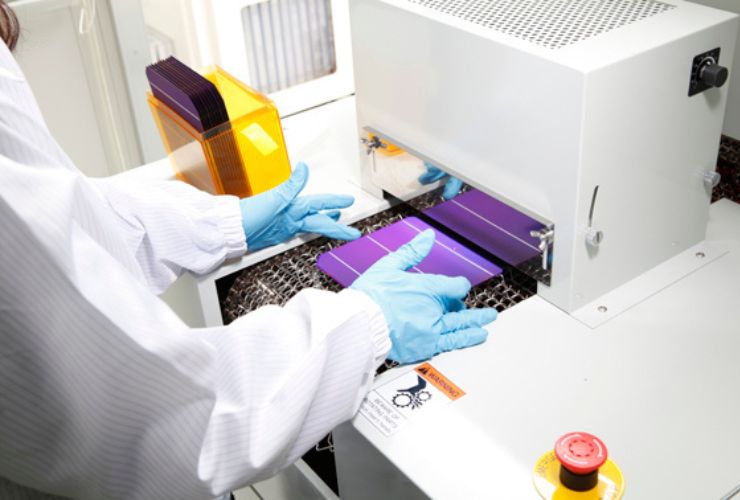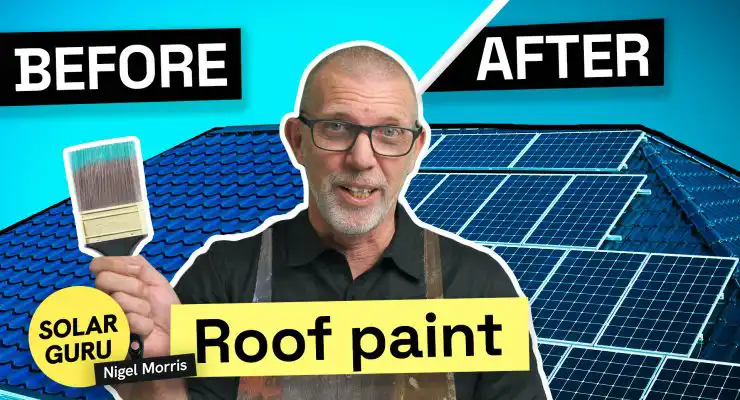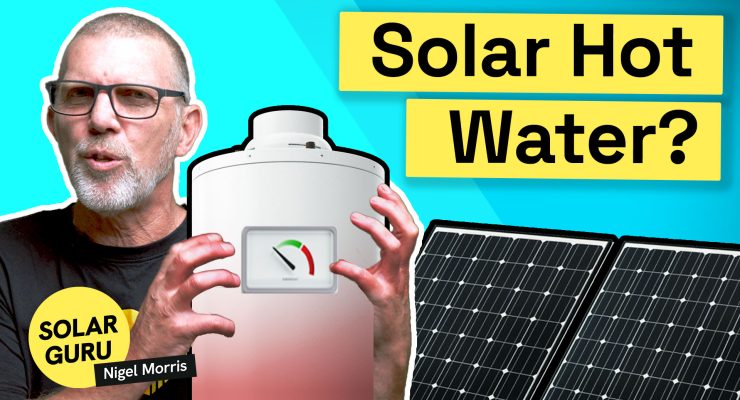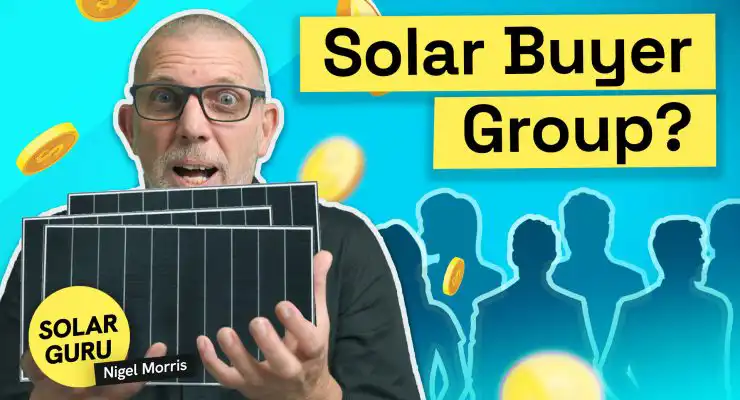
What the Guru says
Hi Solar Guru, will there soon be a new technology coming that makes panels heaps more efficient, and should I, therefore, wait before I buy a system?
Yes, technology will evolve. Things will continue to get better, and there will also be something new around the corner. But I would only wait if you want to continue to pay high electricity bills for years, and years and years.
So my advice is do not wait. Choose the awesome solar technology that we already got available right now.
Why buy solar today if tomorrow’s solar will be better?
Over the past 20 years, solar panels’ wattage has grown from 150 Watts to 450 Watts. While this sounds like a huge improvement, the truth is that panels nowadays are also much bigger. This means the improvements in wattage are approximately 2/3 due to the physically large panel size and 1/3 due to innovations. Inverters also have increased robustness, efficiencies and functionalities over these 2 decades.
So the question has to be asked, is there any magic solar technology coming out over the next few years that will be called a game changer? Just as AI has suddenly gained the attention of the media and consumers?
While there are continuously small advancements being implemented to improve solar panels’ output and efficiency. It is difficult to predict the size of future breakthroughs, by all realistic assessments. There is no major technological invention foreshadowed in the near future.
Also, based on the current technology, the maximum efficiency conversion is around 25%. Meaning, if the sunlight hitting the panel represents 100% of the available energy, up to 25%, will be converted to electricity, and 75% will be lost. The majority of panels on the Australian market represent an efficiency of 20 to 23%. So major future improvements are not that likely.
So what should you do?
On 1st inspections, delaying a solar purchase because one wants to wait for a better panel or inverter could become an indefinite waiting time, as new models are launched as often as every three months. But the improvements from model to model are marginal eg 5 Watts of output. Such as a 430 Watts change to a 435Watts panel or around 1% of output improvement between models. This is a relatively small improvement when the difference in output between a clean and dirty panel can be 5 to 10%.

If you are considering installing solar panels, and maybe a battery and EV charger as well. It is important to weigh the potential benefits that will become available immediately against the benefits of waiting for new technologies to become available. Of course, waiting will actually occur a cast, as one will still pay the usual electricity bills. Waiting for a significant leap in efficiency or other improvements could mean missing out on potential energy savings and financial benefits during the waiting period.
It reminds me of an old cartoon about real estate. It shows a skeleton sitting on a bench. The text below says: “Been waiting for real estate to drop significantly”
Ultimately, the decision of whether or not to wait for new solar technologies to become available is a personal one. But please remember today’s latest technology will always be superseded by some fangle-dangle invention in the future. You have to decide when it is the right time to take the plunge.
We recommend that if you are concerned about the environmental impact of coal and gas fired energy production, and if you want to see lower electricity bills – then you may want to install solar and batteries now.
What other solar panel technologies are in the development phase
There are many different solar panel technologies in development, and some show great promise. But not too many will be on the commercial market in the next 3 to 5 years. Also, it’s not just a matter of generating electricity via solar in a different way, but also making the technology cheaper. Making it reliable and long-lasting as well as improving the efficiency from current benchmarks.
The technologies under research are
Organic solar cells
The Organic solar cells are made from organic carbon-based materials, such as polymers. They are usually much cheaper to manufacture than traditional silicon solar cells, need less energy in the manufacturing and organic solar cells have the potential to be more flexible and lightweight. The challenge is to make them last as long as conventional silicon panels and reach a higher degree of stability.
Thin-Film solar cells
Thin-film solar cells are made from different materials, such as amorphous silicon (a-Si), copper indium gallium selenide (CIGS) and cadmium telluride (CdTe). One other material, potentially with the highest promise is Perovskite solar cells. They are from a material called Perovskite, a hybrid organic-inorganic material as the light-absorbing layer. Perovskite solar cells are much cheaper to manufacture than traditional silicon solar cells. They also have the potential to be more efficient. Current researchers are focusing on ways to enhance the cell’s stability, scalability, and longevity.
Quantum dot solar cells
Quantum dot solar cells are made from semiconductor nanoparticles called quantum dots. They can in theory be more efficient than conventional silicon solar cells, as they can be tuned to absorb specific wavelengths of light. Meaning a wider light spectrum can be absorbed, than standard panels. They can be manufactured using low-cost, solution-based processes. Ongoing research aims to improve the dot solar cells’ stability and increase production volumes.

Heterojunction (HJT) solar cells
HIT (Heterojunction with Intrinsic Thin-layer), technology is already used in advanced solar panels. These modern cells combine the advantages of crystalline silicon (c-Si) and thin-film solar cells by sandwiching both technologies together. With a thin film layer on either side of a monocrystalline silicon wafer. REC Solar has brought this technology to the Australian market and the key advantages are high efficiency, better performance in hot weather and low light as well as lower degradation over long periods.
The complexity of the manufacturing process of HJT can make the manufacturing process challenging and costly compared to traditional silicon cells. For this reason, while offering many advantages, panels with such technology are a little more expensive.
Transparent Solar Cells
Building integrated Solar is the bug’s holy grail. Imagine if windows and walls of homes could become energy generators. Transparent solar cells might assist in this goal. They are designed to capture sunlight while still allowing light to pass through, making them suitable for integration into windows, glass doors and other transparent surfaces. Research is ongoing to improve the efficiency and transparency of these cells to enable widespread adoption.
Solar Paint
Solar paint or solar coatings involve the use of photovoltaic materials that can be sprayed or applied as a paint-like substance onto a wide range of surfaces to generate electricity. This technology could potentially turn any object or surface into a solar energy generator. While such technology has already been developed, the challenge is to gain decent efficiency and improve durability.
Printable solar cells
Unlike traditional silicon-based solar cells, which require detailed manufacturing steps and dust-free environs, printed solar cells can be manufactured using relatively simple and inexpensive techniques, such as screen printing, inkjet printing, or roll-to-roll printing. The lightweight and flexible surface of printed solar cells also allows for straightforward integration into applications, such as portable electronics, wearable devices and building-integrated photovoltaics (BIPV) eg windows. Unfortunately, so far they do not last very long and have a low efficiency. Research is now underway to improve these downsides.
It is important to note that many of these technologies other than Heterojunction (HJT) are not available in any of the residential or commercial solar panels that are for sale via the Australian Solar distributor network. It is very likely that one or more of these technologies will be commercialised over the next decade, but not all will be successful.


